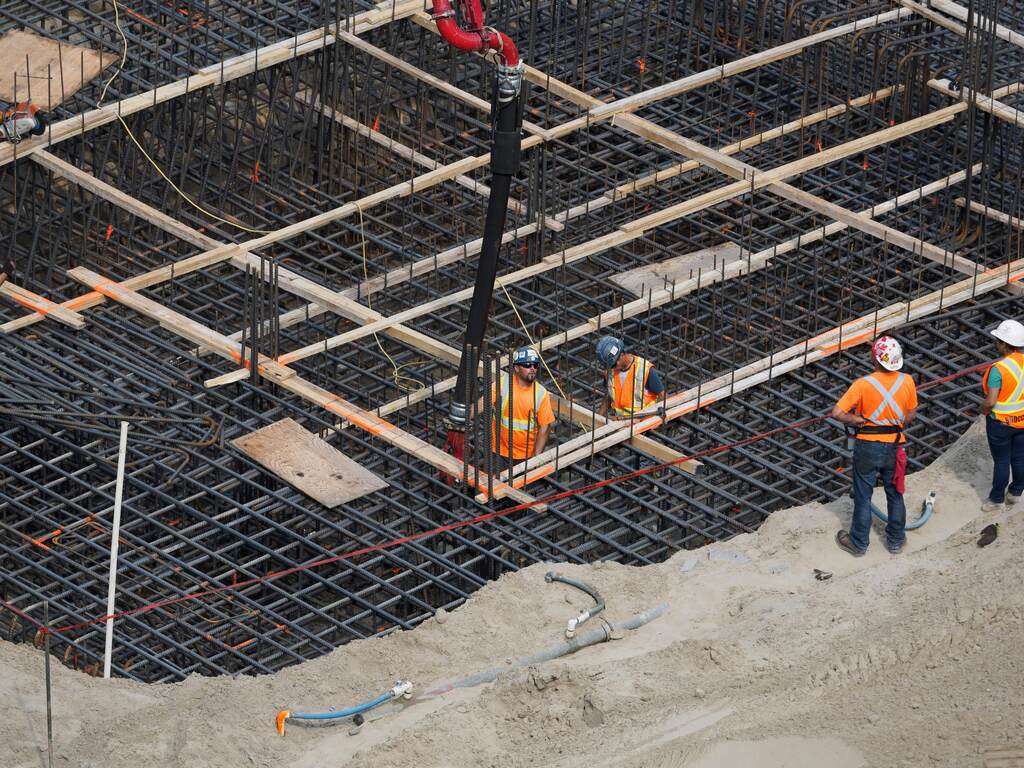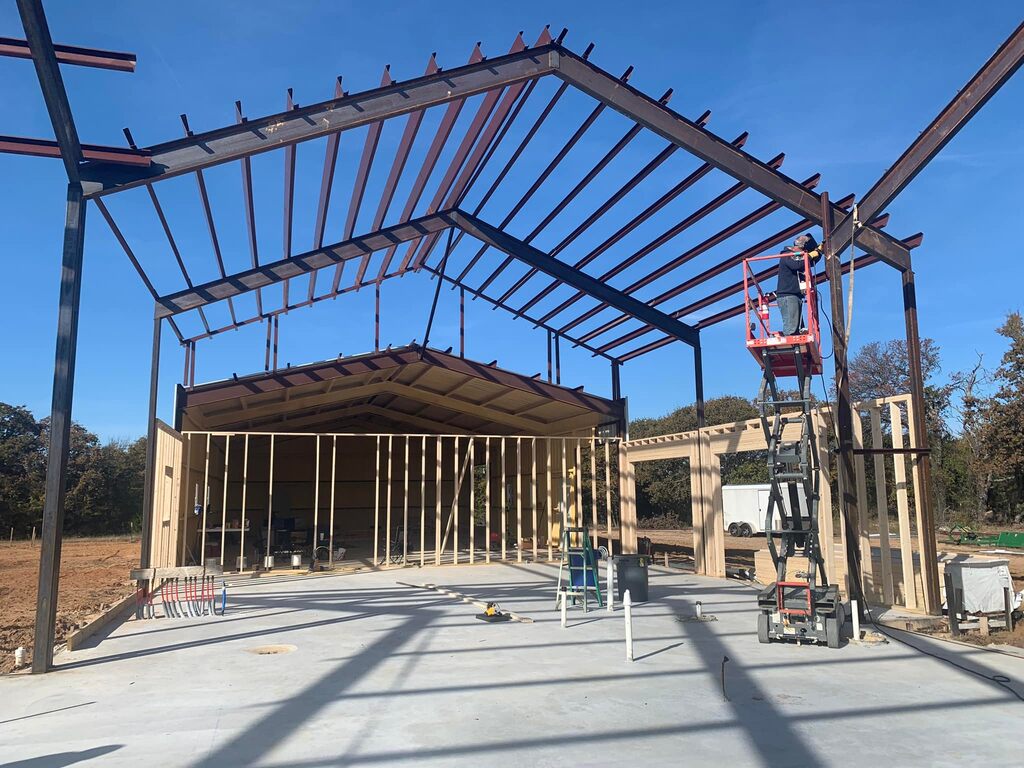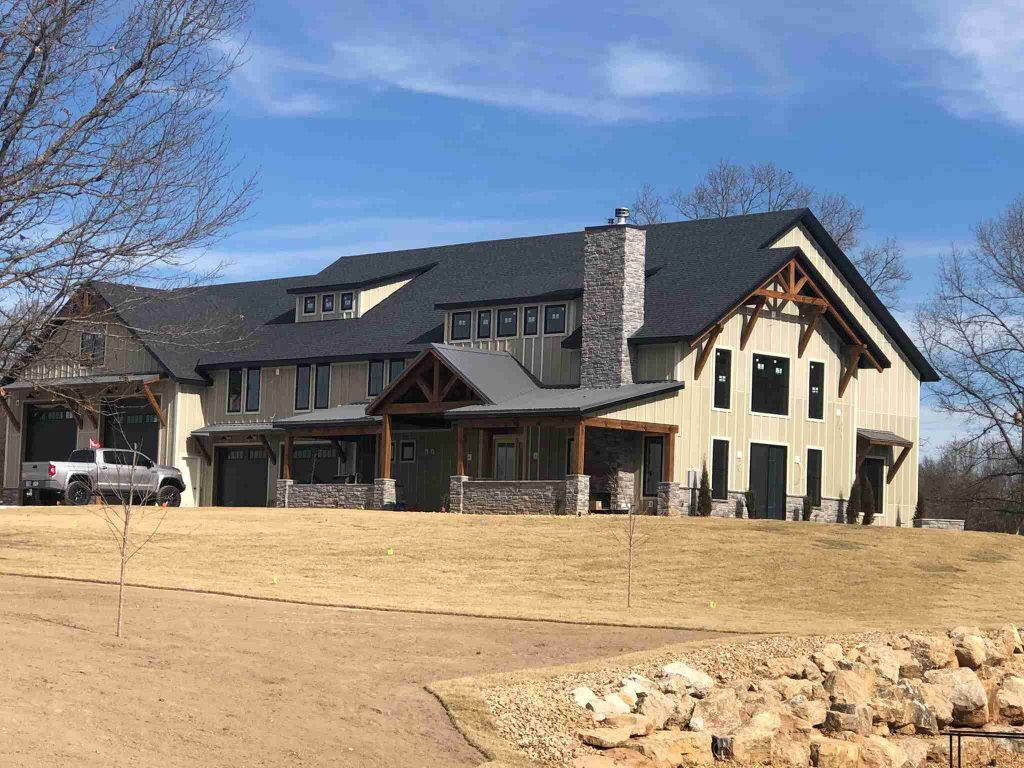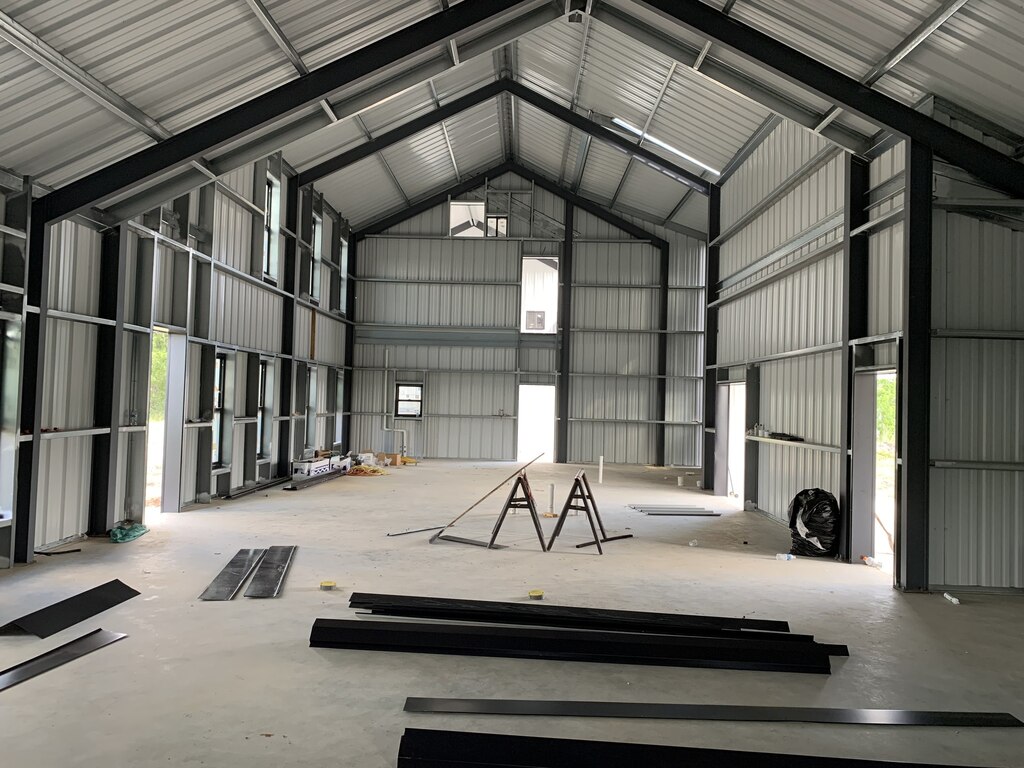
Choosing suitable materials for your building project can be challenging since you must ensure they’re strong enough to last. Steel frame structures are a game changer in construction, boasting an impressive weight-bearing capacity. This article will guide you through what steel frame structure construction involves and why it might be the perfect choice for your next venture. Expect to learn about its various types, applications, pros and cons, giving you the inside scoop on how it measures against other methods.
Table of Contents
Understanding Steel Frame Structure Building Construction
Steel frame buildings in America have a long history since the 1800’s. Steel framing creates the backbone of many modern buildings. It consists of vertical steel columns and horizontal I-beams constructed in a rectangular arrangement to support floors, roofs, and walls. Workers connect these pieces either by welding them together or using bolts or rivets.
In this type of construction, the steel frames bear the load of the entire building. This means everything from heavy snow on the roof to furniture and people inside all get held up by these sturdy metal beams and columns. Their strength makes steel frames perfect for creating large open spaces without needing many interior supports – think of giant warehouses or spacious arenas. They’re also essential when building multi-story buildings; they make skyscrapers possible because they can handle the weight.
Steel has another superpower: it bends instead of breaking under pressure from natural phenomena like earthquakes. However, while it’s tough against shakes and rattles, fire is its kryptonite unless adequately protected with fire-resistant materials.
Types of Steel Frame Construction
Steel frame construction isn’t a one-size-fits-all affair; there’s a variety of ways in which these robust structures come to life. Diving into this segment, we explore the distinct methods—each with its unique process and characteristics—that shape how edifices rise from mere blueprints to towering realities.
Conventional Steel Fabrication
According to The Constructor, conventional steel fabrication involves workers cutting steel pieces to size and welding them together to create the building framework. This method works well both at the construction site and in a shop away from the project. It’s like assembling a giant puzzle with steel beams instead of cardboard pieces. Each beam must fit perfectly to ensure a strong structure. After shaping these big metal parts, artisans join them into a sturdy skeleton frame—a critical step in building schools, malls, or skyscrapers. Next is bolted steel construction, which stacks on more sophisticated techniques for crafting towering structures.
Bolted Steel Construction
Bolted steel construction is like building a giant metal puzzle. Workers cut and paint steel pieces in a factory first. Then, they ship the parts to the site, where everything comes together with bolts. It’s quick, clean, and doesn’t need much work on-site compared to welding. This method uses less time to set up cranes or deal with heavy welding gear. Structures go up fast, allowing builders to move on to other tasks sooner. Bolted joints are strong and reliable!
Light Gauge Steel Construction
Light gauge steel construction is famous for creating residential and small buildings, such as barndominiums and pole barn homes. According to Understand Construction, It involves thin sheets of steel shaped into C-sections or Z-sections. Builders love this method because it’s lightweight and easy to work with. They often choose different types of steel trusses to best support each unique design.
Receive Quotes from Multiple Barndominium Builders & Kit Providers Near You Today (It's Free!)
Fill in this 1-minute form below and receive estimates for your project without having to find them yourself! Let them do the work.
This construction can handle both the regular weight you find in homes and extra loads from things like snow or furniture. Light gauge steel stays strong over time, making it an excellent choice for many projects. Additionally, its pieces fit together quickly on-site, speeding up the building process.

Applications of Steel Frame Structures
Steel frame structures stand tall in many different settings. They form the skeleton of some of the most impressive buildings and facilities around us. Let’s take a closer look at where these strong frames show up:
- High-Rise Buildings: Skyscrapers and office towers use steel frames because they can handle heavy weights from many floors. Steel helps these giants resist wind and hold up against earthquakes.
- Industrial Buildings: Factories and power plants rely on steel structures for their large spaces with no need for many support walls. This allows easy movement of big machines and equipment.
- Warehouse Buildings: Storage units and distribution centers often have steel frames because they can cover huge areas without internal columns, making more room for goods and vehicles.
- Residential Buildings: Homes, such as pole barn homes, sometimes use steel framing instead of wood because steel doesn’t rot or get eaten by bugs. It also allows builders to create unique shapes that wood can’t handle.
- Temporary Structures: Event venues like stages or exhibition halls might use steel frames for quick set-up and tear-down. These frames make building safe, temporary places easy and fast.
- Aircraft Hangars: The wide-open spaces needed to store planes are perfect for steel frame structures. They allow large doors that planes can fit through without any trouble.
Advantages of Steel Frame Construction
Steel frame construction brings a robust set of cards to the table, with perks stacked against traditional methods. From economic savvy to design finesse, these structures are tailor-made for modern demands—offering a blend of resilience and creativity that sets the stage for tomorrow’s skylines.
Economic Benefits
Building steel frame structures, such as pole barns, can save money in many ways. They are quick and easy to put up, cutting labor costs. Since they’re strong but light, you need less material, making them cheaper to move around. Large spaces can be made without support columns getting in the way, saving on interior construction expenses. These buildings also let owners change layouts or add extra parts at lower design costs. Steel’s adaptability means it fits into any shape for custom designs. Plus, supporting the steel industry helps boost the economy by creating jobs and demand for related services.

Durability and Lifespan
Steel frame construction also offers a long-lasting solution. Springfield Steel Buildings highly recommends steel structures because they can withstand the test of time and weather; they handle heavy snow, strong winds, and even earthquakes with less risk of damage. Quality matters for durability. When builders use high-grade steel and care for it right, these buildings can last decades without significant repairs.
Steel’s resilient against rust when treated properly—coatings or galvanization help here. Unlike wood, which can rot or pests that eat away at other materials, steel stays sturdy year after year. With good maintenance, these structures resist wear and tear from daily use. Properly built steel frame buildings hold up well over time—even under challenging conditions like in industrial settings or areas with harsh climates.
Flexibility in Design
Steel frame structures are like an artist’s canvas but for architects and engineers. They can dream up all sorts of shapes and sizes, turning wild ideas into actual buildings. The strength of structural steel lets them create wide-open spaces without needing many walls or columns. This means big rooms, clear floors, and more light through windows.
Builders also love steel frames because they can adjust them easily on the job site. If a client wants changes or something unexpected comes up, making fixes is not challenging. Steel frame construction is the go-to choice for anyone wanting a building that stands out or one that might need to change down the road.
Disadvantages of Steel Frame Construction
Steel frames might struggle in a fire. They can lose strength when heated up, so people must add protective materials. These materials, like fire-resistant panels or sprays, cost extra money and time. Building with steel often costs more than using wood. Laborers also need special skills to build these structures. Not all construction teams have those skills. Additionally, steel needs heavy machinery to move and fix into place, which adds to the expense.
Thicker walls are needed for insulation in steel-framed buildings. This takes up more space inside the room than other materials like wood or brick, which naturally insulate better. Noise can also be an issue—steel doesn’t absorb sound well, so noise can easily penetrate, making it louder inside.

How Steel Frame Construction Compares to Other Building Methods
When discussing modern construction, steel frame structures stand out thanks to their unique characteristics. They offer distinct advantages and some limitations when compared to other methodologies. Let’s look at how steel frame construction stacks up against its competitors.
| Building Method | Strengths | Weaknesses | Speed of Construction | Sustainability |
| Steel Frame Construction | High strength-to-weight ratio- Flexibility in design Customizable shapes and sections | Higher initial cost Susceptibility to corrosion | Quick and efficient | Environmentally friendly (recyclable material) |
| Concrete Construction | Inherent fire resistance- Thermal mass benefits | Rigidity limits design flexibility Longer curing time | Slower due to curing times | High carbon footprint during manufacture |
| Timber Frame Construction | Renewable resource Aesthetic appeal | Vulnerable to fire and pests Can warp or settle over time | Speed varies | Sustainable if sourced responsibly |
| Prefabricated Construction | Factory quality control Reduced on-site time | Transportation limits size and shape Requires precise planning | Extremely fast assembly | Varies based on materials used |
Our comparison reveals that steel frame construction excels in speed and design versatility. It’s a trendsetter in adaptability, often outpacing the rigidity of concrete. Timber frames have a charm but can’t match steel’s fire resistance. Prefabricated methods are swift but lack the infinite customization that steel allows. Sustainability-wise, steel is a champion—recyclable, durable, and long-lasting, unlike concrete’s hefty carbon footprint. Each method carries unique pros and cons, but steel’s robust features often make it the go-to choice for modern construction.
Conclusion
Steel frame structure building construction shapes our skylines with towering high-rises and sprawling warehouses. It’s a game changer, bridging the gap between design dreams and real-world buildings. Imagine cities without these strong, adaptable metal skeletons – it just wouldn’t be the same. Steel frames stand tall against time’s test, proving why they’re at the heart of modern construction magic. To explore additional information on building solutions made of steel, like shouses, metal garages, and shipping container homes, follow our Facebook Page, browse our website and join us on Pinterest.

